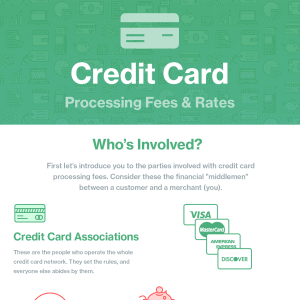Stripe Payments can be a great tool for tech-savvy nonprofits, especially those that take most of their donations online.
Our content reflects the editorial opinions of our experts. While our site makes money through
referral partnerships, we only partner with companies that meet our standards for quality, as outlined in our independent
rating and scoring system.
The ability to accept online donations at a reasonable cost is a game-changer for modern nonprofits. Stripe makes this easier by offering discounted rates for 501(c)(3) organizations, along with a robust set of tools for collecting and managing donations.
This guide covers Stripe’s nonprofit pricing, features, setup process, and alternatives so you can decide if it’s the right fit for your organization.
What Is Stripe For Nonprofits?
Stripe is a third-party payment processor that gives qualifying nonprofits a 0.7% discount on transaction fees. Qualifying is easy, only requiring your organization to:
- Have verified 501(c)(3) status
- Process at least 80% of donations through Stripe
Keep in mind that some transactions (like American Express) do not qualify for the discounted rate.
Stripe Nonprofit Pricing
Stripe has no monthly fees for basic services. Most costs are rolled into a flat per-transaction rate:
| Transaction Type |
Fee |
| Credit cards (except Amex) |
2.2% + $0.30 |
| American Express |
3.5% |
| ACH transfers |
0.8% (max $5) |
If your donors use Amex often, you could end up paying more under the nonprofit pricing, so make sure to compare your options.
To better estimate your costs, get a full breakdown in our guide to Stripe processing fees.
How To Apply For Stripe’s Nonprofit Discount
Stripe doesn’t have separate nonprofit accounts. Instead, you’ll apply for a discount after opening a regular account. Here’s how to get started:
Step 1: Create A Stripe Account
Sign up for a Stripe account by following the prompts on the website.
Step 2: Gather Required Documents
You’ll need to show that at least 80% of your donations are tax-deductible. Non-eligible transactions include membership fees, tuition, ticket sales, registration fees, and auction payments.
Step 3: Apply for your nonprofit discount
Finally, you’ll need to provide proof of your 501(c)(3) status with your EIN or IRS determination letter.
Submit this along with the information you gathered in step 2 by email to [email protected].
Using Stripe To Boost Nonprofit Fundraising
Stripe is a very customizable platform, so you can create a platform that works best for your nonprofit. Here are some of the most useful ways you can use Stripe for fundraising.
Custom Donation Forms
Stripe lets you embed donation forms directly on your website so supporters can give without leaving your page. You can customize branding, add suggested donation amounts, and include fields to collect the donor information you need.
With Stripe’s developer tools, nonprofits also have the flexibility to build highly tailored donation experiences.
Hosted Checkout Pages
Stripe Checkout provides a secure, prebuilt donation page that works across devices and payment methods. This is a great option if you don’t want to manage form design and PCI compliance yourself.
Nonprofit Software Integrations
Stripe integrates with tools like Mailchimp, Zoho Subscriptions, Donorbox, and Buy Me A Coffee. Or you can use Stripe’s API to build custom connections.
Recurring Donations
Set up recurring donations so supporters can commit to monthly or annual gifts, ensuring more predictable funding for your nonprofit. Recurring donations incur an extra fee of 0.5% to 0.8%, depending on the plan.
Stripe supports recurring payments through both stored credit card information and ACH payments.
eCommerce Tools
Stripe is built for eCommerce and integrates with platforms like WooCommerce, Magento, and Shopify for merchandise sales or fundraising campaigns.
Reporting & Taxes
Stripe Tax calculates sales tax, VAT, and international taxes. An additional per-transaction fee applies.
Stripe also issues 1099-K forms for accounts that meet IRS thresholds.
Alternatives To Stripe For Nonprofits
If Stripe feels too technical for your organization, or it doesn’t fit your fundraising strategy, you still have plenty of solid options.
- Square: Square is a great choice for nonprofits that need strong in-person payment tools. While it doesn’t offer discounted nonprofit rates, Square provides a wide range of donation features and business productivity tools. It’s especially useful if you plan to accept donations at events or in person.
- PayPal: PayPal is great for nonprofits that want something quick and easy to set up. While Stripe emphasizes customization and developer flexibility, PayPal is built for ease of use. It also gives nonprofits access to its large ecosystem, including peer-to-peer payments, eCommerce, and in-person payments through PayPal Point of Sale.
- Dharma Merchant Services: If your nonprofit processes higher volumes or you want a dedicated merchant account, Dharma is worth considering. Dharma charges a monthly fee but uses interchange-plus pricing, which can be more cost-effective at scale. Nonprofits can also qualify for discounted processing rates compared to standard business accounts.
Is Stripe Right For Your Nonprofit?
Stripe can be an excellent option for nonprofits, especially if:
- Most of your donations come in online
- You’re comfortable with tech setup or integrations
- You’ll benefit from recurring donations and eCommerce tools
Stripe’s nonprofit discount is competitive, but not all payment types qualify, and optional add-on fees can increase your costs. That’s why we always recommend shopping around before committing.
For tech-savvy organizations, Stripe is a cost-effective way to scale fundraising. If you’d prefer something simpler, Square or PayPal may be a better fit. And if you want even more options, make sure to check out our list of the best credit card processors for nonprofits to find the best match.











